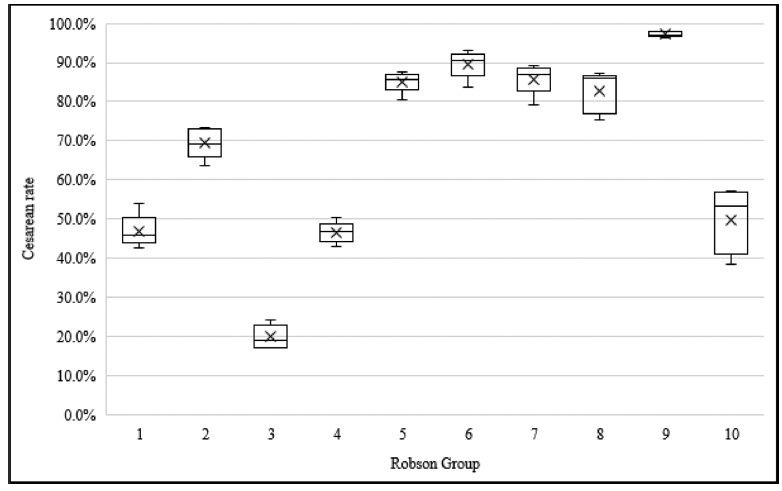Revista Brasileira de Ginecologia e Obstetrícia. 2020;42(9):522-528

To obtain cesarean-section (CS) rates according to the Robson Group Classification in five different regions of Brazil.
A descriptive epidemiological study using data from secondary birth records fromthe Computer Science Department of the Brazilian Unified Health System (Datasus, in Portuguese) between January 1st, 2014, and December 31st, 2016, including all live births in Brazil.
The overall rate of CSwas of 56%. The sample was divided into 11 groups, and vaginal births were more frequent in groups 1 (53.6%), 3 (80.0%) and 4 (55.1%). The highest CS rates were found in groups 5 (85.7%), 6 (89.5%), 7 (85.2%) and 9 (97.0%). The overall CS rate per region varied from 46.2% in the North to 62.1% in the Midwest. Group 5 was the largest obstetric population in the South, Southeast and Midwest, and group 3 was the largest in the North and Northeast. Group 5 contributed the most to the overall CS rate, accounting for 30.8% of CSs.
Over half of the births in Brazil were cesarean sections. The Midwest had the highestCS rates,while theNorth had the lowest. The largestobstetric population in the North and in the Northeast was composed of women in group 3, while in the South, Southeast and Midwest it was group 5. Among all regions, the largest contribution to the overall CS rate was from group 5.
Search
Search in:


Comments